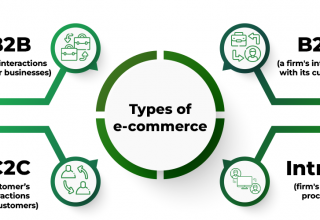
Investing in retail stocks requires you to consider a lot of figures. These figures will help you determine the long-term security, short-term efficiency, and overall profitability of the retail company.
Current Ratio
You get the current ratio by dividing a company’s current assets by its current liabilities. This metric tells something about the company’s ability to pay off its short term obligations.
A current ratio that is greater than one indicates that a company can cover its short-term debt with its most liquid assets. The current ratio is important for an investor to measure the company’s liquidity and short term stability of an organization during the potential seasonal fluctuations that are not rare to retail.
Quick Ratio
The quick ratio is determined by dividing cash and accounts receivable by the current liabilities. This ratio is similar to the current ratio, but it is more restrictive in terms of the assets that can cover the liabilities.
Because of this, the quick ratio is a more ideal measurement of the immediate liquidity of a company. If a company is forced to liquidate its assets to pay its bills, companies with a higher quick ratio measurement are compelled to sell fewer assets.
When it comes to the investor’s perspectives, the quick ratio offers insight into the stability of the immediate liquidity position of a company.
Gross Profit Margin
The gross profit margin is one type of a profitability ratio that is determined in two steps:
First, the gross profit is determined by finding the difference between the net revenue and the cost of goods sold. Second, the gross profit is divided by net sales.
This measure is useful to management as well as investors in regards to the markup earned on products. For an investor, higher gross profit margins are better, since a piece of inventory generates more revenue when it is sold for a higher gross profit.
Since all items in a retail company are inventory items, the gross profit margin relates to every item in the retail store.
Inventory Turnover
The inventory turnover is determined by dividing the net sales of a specific period by the average inventory balance for the same period. This metric is used measure the efficiency of inventory management.
Retail companies have inventory on hand to manage and keep safe. On top of that, older inventory may become obsolete. And because of this, a higher inventory turnover is favorable for management as well as investors.
A low inventory turnover means that the company is not efficiently holding too much inventory or not getting large amounts of sales.
However, an inventory turnover can also be too high. For example, a large ratio may mean that a company is efficiently handling inventory, but not receiving ordering discounts.
Return on Assets
Return on Assets (ROA) is another profitability metric that tells something about how well a company is using its assets to generate some revenue. This is particularly crucial for a retail company, as it depends on its inventory to generate sales.
The financial ratio is the result of dividing a company’s total earnings by its total assets. An investor can compare a retail company’s ROA to industry average in order to gauge how well the company is pricing its goods and turning over its inventory.


























